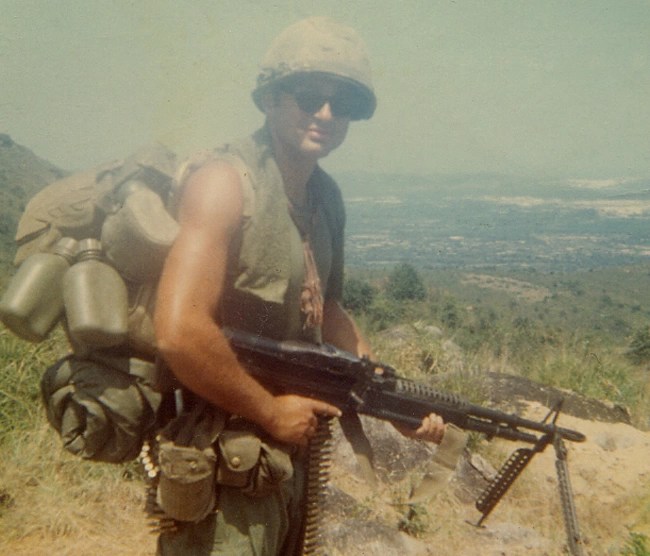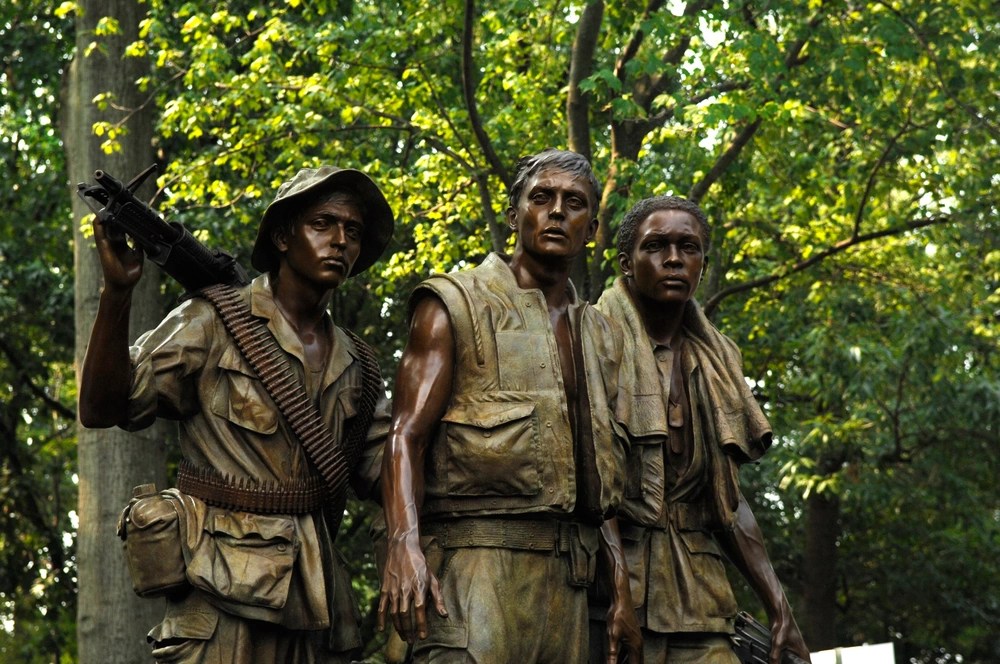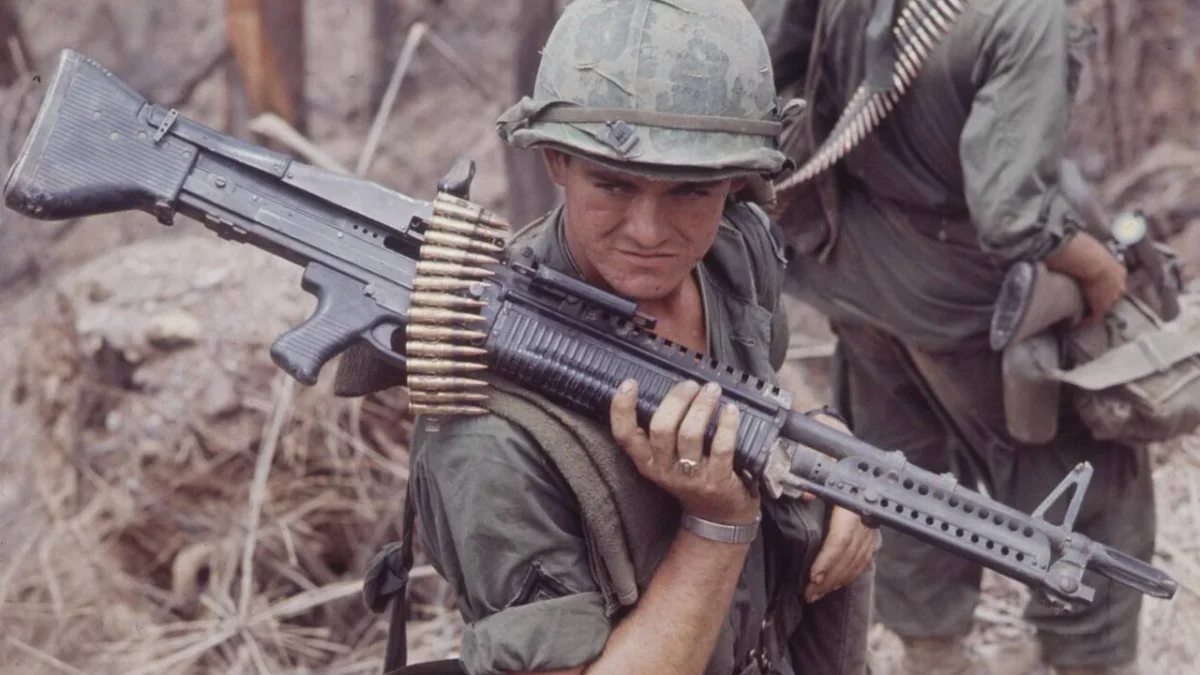It weighed over 20 pounds, jammed when it felt like it, and chewed through belts of 7.62 NATO like a chainsaw on meth…but for the American warfighter in Vietnam, the M60 was more than just a machine gun. It was an iron pig that ate communism for breakfast.
Birth of a Beast
Born out of post-World War II innovation and frustration, the M60 was America’s answer to the next generation of firepower. Drawing heavy inspiration from the German MG42’s roller-locked bolt and the FG42’s general layout, American engineers tried to create a belt-fed air-cooled machine gun that could replace multiple legacy systems in one go: the BAR, the M1919, and the M1918.
Officially adopted in 1957, the M60 was intended to be a jack-of-all-trades: light enough for mobile infantry, powerful enough for suppression, and adaptable to vehicles, helicopters, and fixed positions. The idea was brilliant. The execution? Well, like many great American war machines, it got better over time, mostly because our troops were dedicated enough to make it work.
In The Suck: Vietnam
By the time Vietnam kicked off, the M60 had landed in the jungle with full authority. Each squad typically had a dedicated M60 gunner, often a guy built like a linebacker or just too young to say no. He was backed up by an assistant gunner (the A-gunner) and an ammo bearer. Together, they carried not just firepower, but intimidation.
When you heard that distinct BRRRRRTTT in the trees, you knew the piggy needed to eat.
It was big, it was mean, and it was the backbone of American infantry firepower in close-quarters jungle warfare. Troops used it prone, from trees, on door guns in Huey helicopters, and in bunkers where they laid down suppressive fire like a steel rainstorm.
Despite its flaws, American troops made the M60 a weapon of legends.
“If you had the M60, you were the loudest guy in the bush, and the enemy hated you for it.” – Unnamed US. soldier, Vietnam.
A Love-Hate Relationship
Let’s be honest here, the pig wasn’t perfect. Every veteran who has carried one has a love-hate story about their chonky cannon.
THE LOVE:
- It delivered raw 7.62x51mm NATO power
- It laid down fairly accurate, and incredibly suppressive fire
- It could be adapted to nearly any platform
THE HATE:
- It jammed…quite a bit, often due to worn feed trays or weak springs
- The barrel was awkward to swap, and lacked a built-in carrying handle in early models
- The bipod was mounted to the barrel itself, making sustained fire and barrel changes even more difficult
- It was absolutely OBSCENELY heavy, and that’s before belts and spare barrels.
All that said, none of that mattered when things got loud. The M60 had a secret weapon in itself: psychological warfare. It didn’t just hit targets, it made sure that the enemy knew they were being hunted. You cursed it, you carried it, you fed it, and kept it alive like a high-maintenance troop with a drinking problem…but when it barked, it cleared tree lines.

War Machine to Pop Culture Icon
The M60 didn’t just serve, it starred. Hollywood made damn sure of that. Rambo carried it like it was an extension of his soul, hip-firing freedom into the void. In Full Metal Jacket, Animal Mother charged into combat with his M60 slung across his chest like it was a rite of passage. Platoon showed it in its raw, sweaty, mud-covered reality.
For a generation of Americans, the M60 wasn’t just a gun, it was the sound of defiance, the symbol of no-compromise fire superiority.

Legacy of the Pig
Eventually, the M60 was phased out in favor of more modern systems like the M240, which offered better reliability and modularity. However, many American and allied units continued to use the M60 into the Gulf War and even today in limited roles. Collectors love them, surplus enthusiasts restore them, and veterans still talk about them like they were people, not tools. In the heat of battle, the M60 wasn’t just a machine, it was a squad member.
The Last Roar
In the mud, the monsoons, and the madness of Vietnam, the M60 delivered freedom one belt at a time. It wasn’t perfect, but it never really needed to be. All it needed was to speak loudly, and when it did, EVERYONE listened. In the jungles of Southeast Asia, the Pig, not the tiger, had the final word.
Read the full article here


